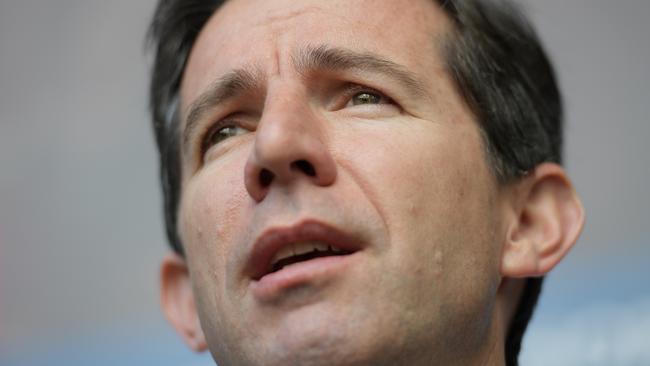Take the politicians out of education policymaking
An independent and expert statutory body makes sense.

This year has seen the failure of yet another higher education “reform” bill, so it is worth asking why. Although the bill did not fail formally, it has not reappeared on the parliamentary notice paper, suggesting it inevitably would have done so.
So we now have a system that has been in a holding pattern for more than five years and we can expect nothing much to happen before the next election.
The last comprehensive higher education policy statement, however much it was distorted to get it through the political process, followed the 2008 Bradley review, which ostensibly was accepted but funded only at about 30 per cent of the recommended levels.
The last word on the matter from a Labor government was in 2013, when it proposed to cut allocations by about the same amount as it later opposed in opposition.
The present “reforms” have been driven entirely by the need to find those savings, so presumably they will have to be found but in ways that don’t need legislative change.
The result is likely to be whatever comes from a series of actions cobbled together to meet savings, so unlikely to be coherent or sustainable policy.
But federal Education Minister Simon Birmingham seems in no mood for anything short of payback, so the imminent mid-year economic and fiscal outlook will present him with a useful opportunity to implement cuts without bothering with the veil of reform.
Options that will be on the table include ending indexation, using the contract negotiations to effectively reintroduce caps on places, thus at least temporarily suspending the demand-driven system, and the inclusion of performance measures as a condition of the new contracts.
Universal access to higher education (the demand-drive system) was always doomed because it could never be accompanied by a realistic increase in funding, and what we have seen since is the reduction in per capita allocations to make the available funds fit the demand.
This led, perversely, to increases in the places made available by universities as they tried to make up the funding shortfall through volume and economies of scale. The demand-driven system thus became the holy grail for all universities and both sides of politics because universities needed it for financial and political parties for political survival.
Yet universal access remains unsustainable and should have been examined in far more detail and with a far greater focus on ensuring that quantity would be balanced with quality.
Removing it by stealth for budgetary reasons will leave the underlying issues unresolved. Indeed, imposing this new regulation will create an even more uncertain and illogical policy environment.
This is occurring in a sector that both major parties argue is crucial to the country’s economic and social prosperity and cohesion. Even if the figures are somewhat overstated, the international student market is the country’s third largest export earner, largely based on the continuing high quality of the higher education system. It is perhaps the only successful export industry not dependent on government subsidy. If government is concerned about maintaining that quality it will need to do more than repeat that it thinks it is vital; it needs to develop a policy framework that is comprehensive and financially sustainable.
As I have argued in these pages during the past 25 years at least, this should be achieved by taking the politics out of higher education and higher education out of politics. This was the argument used in the late 19th century to transfer the operation of NSW railways to an independent statutory authority at arm’s length from government. The statutory authority was a uniquely Australian invention that became a successful means of managing major public infrastructure and social services delivery.
While this is not a new idea, it becomes ever more attractive as each iteration of ill-conceived higher education policy generation inevitably fails as a result of its paucity of evidence-based argument and increasingly as an opportunity for political point scoring. The two major parties are both at fault yet not very far apart on higher education policy and funding.
Were it not for the compulsory adversarial nature of our politics, a bipartisan approach would offer the logical way forward.
In fact, precisely because it doesn’t suit politicians to be seen to be agreeing on major policy, an independent statutory body makes sense. With both major parties backing its creation, it could be given the task of developing the most effective policy solutions based on expertise and evidence while still allowing politicians to make the ultimate decisions about accepting the advice.
In a more courageous political time, perhaps, legislation by a new Labor government establishing the Victorian State Board of Education, of which I was the inaugural chief executive, contained a provision that the board’s formal advice be tabled in parliament.
It certainly ensured that significant policy issues were debated properly.
If the proposed bipartisan statutory authority were established and given the task of imagining the most effective tertiary education system that Australia could afford, it would be likely to begin with a detailed analysis of the cost structures, including finding an efficient price for teaching.
It also might review the sustainability and justification for an adequately funded demand-driven system. It certainly should examine the financial implications of a funding system based on all academic staff being assumed to spend 40 per cent of their time on research, when the evidence suggests that few do. Unravelling this issue alone would provide the flexibility needed to manage expenditure within the overall funding envelope that the two major parties seem willing to deliver while not affecting quality.
That there is a link between research and teaching is a contention that has not withstood serious analysis and is demonstrably unsustainable:
● The Excellence in Research for Australia results, while showing research performance increasing, indicate that it is by no means conducted uniformly among universities or among staff.
● The 40 per cent requirement has forced universities to engage increasing numbers of casual teaching-only staff (in itself proof that teaching can be delivered adequately by staff who are not paid to do research).
● The former colleges of advanced education argued for university status because they were producing better teaching with staff who were not distracted by the requirement to do research.
● The California model is based on having half its universities as effectively teaching-only institutions, teaching only to masters level, yet they produce internationally recognised graduates.
So the question is worth raising and the evidence tested before endorsing a funding system that cannot be justified by the outcomes.
With Labor now seeming to favour a green and white paper process for the development of a sustainable policy and the Coalition’s need for a plausible and affordable policy, the time is ripe for a bipartisan approach.
Establish an expert commission as a statutory authority and give it as its first task a review of tertiary education leading to a range of viable and sustainable options. The same commission should then be charged with the task of implementing the preferred policy options of a new government, whichever side of politics wins the next election.
The need for an independent and expert body to take charge of higher education policy and planning is urgent and existential for the sector and for the ambitions of both major political parties to create an innovative, knowledge-based economy.
Vin Massaro is a professorial fellow in the University of Melbourne Centre for the Study of Higher Education.


